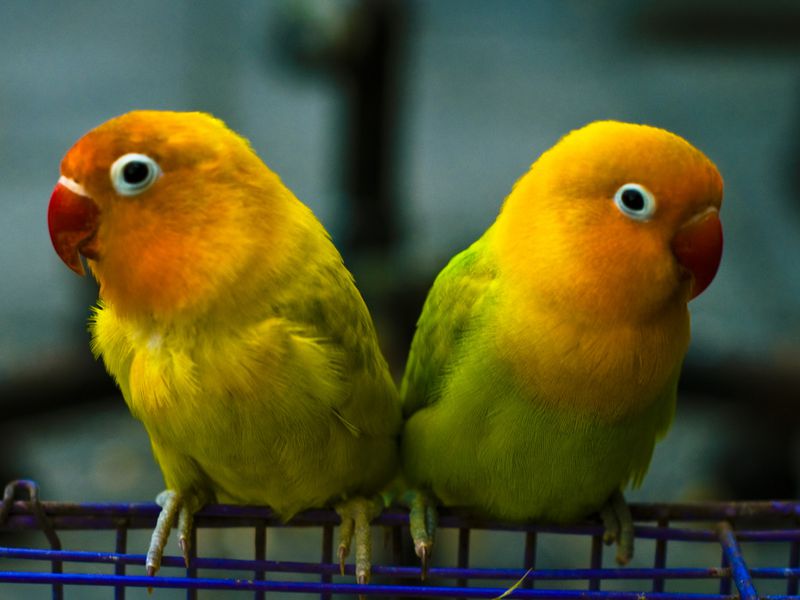
Nature is something extraordinary that dazzles us daily. There are a large number of spectacular living beings that live freely and wildly, and that only by looking at them causes happiness.
Bird lovers know that there is nothing more adorable than lovebirds. These species of birds are monogamous, which means that they live their full lives with only one partner and are entirely inseparable.
If you are going to travel to the African continent, you cannot miss the opportunity to see them in their most extraordinary splendor and freedom. There are various options for birdwatching tourism to admire and get to know them up close without being caged.
Lovebirds’ history
What is really a Lovebird? Can it be defined as a parrot? Yes, like a short-tailed African parrot. Scientifically, this bird is called Agapornis. This name is derived from the Greek words “agape” (love) and “ornis” (bird).
Lovebirds are monogamous and create super special and strong bonds with their partners. These birds stay together most of their life, and much of their time, they try to show their love and fidelity through acts such as: grooming their feathers and continuously snuggling.
Where can you see wild love birds when on vacation?
The African continent is the perfect place for bird lovers to take a splendid vacation. Here you can find an immense variety of habitats that offer a super diverse bird population.
Lovebirds are subdivided into nine species that can be found throughout the African continent:
- Agapornis Cana
- Agapornis Personata
- Agapornis Taranta
- Agapornis Swinderniana
- Agapornis Pullaria
- Agapornis Roseicollis
- Agapornis Fischeri
- Agapornis Lilianae
- Agapornis Nigrigenis
Next, we will show you the best places where you can observe these birds in their wild state:
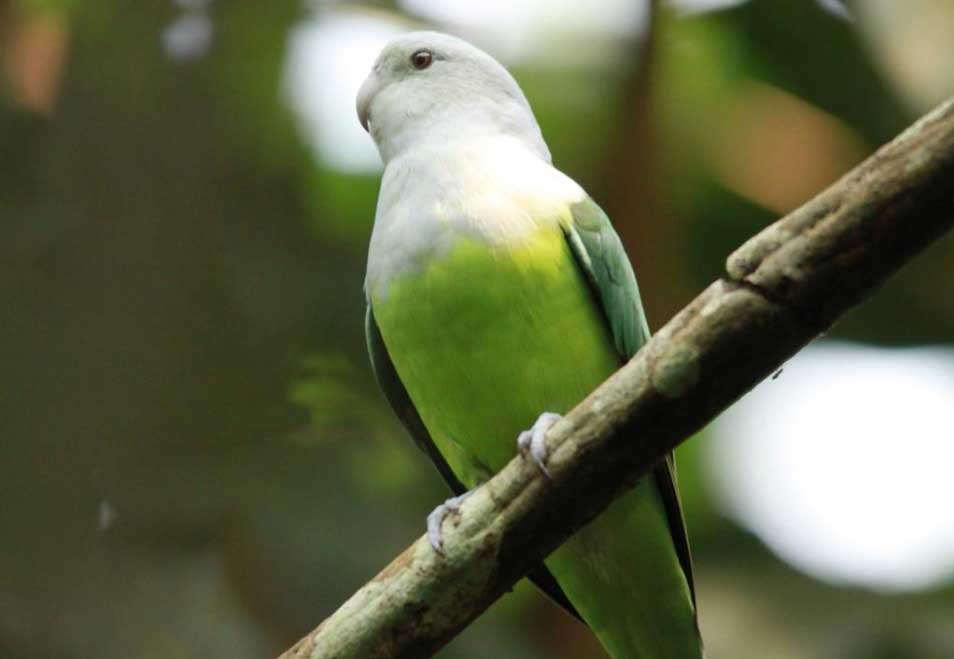
Madagascar, Reunion, and the Comoros Islands
In these islands, you can find the Agapornis Cana, the smallest of all species, slightly exceeding the traditional 13 centimeters that they usually measure.
Its weight can be up to 36 grams. They have gray beaks and legs. In the case of the chest, the males tend to have a brighter gray color and the females are paler.
This type of lovebirds has a green base coloration on the body, which is much more noticeable on the upper body and wings.
In the belly, the color turns yellow; They have a gray or white head that extends to the nape of the neck. It can be noticed that around the eyes, they have yellowish tones; the tail is green but darkens to black at the tip.
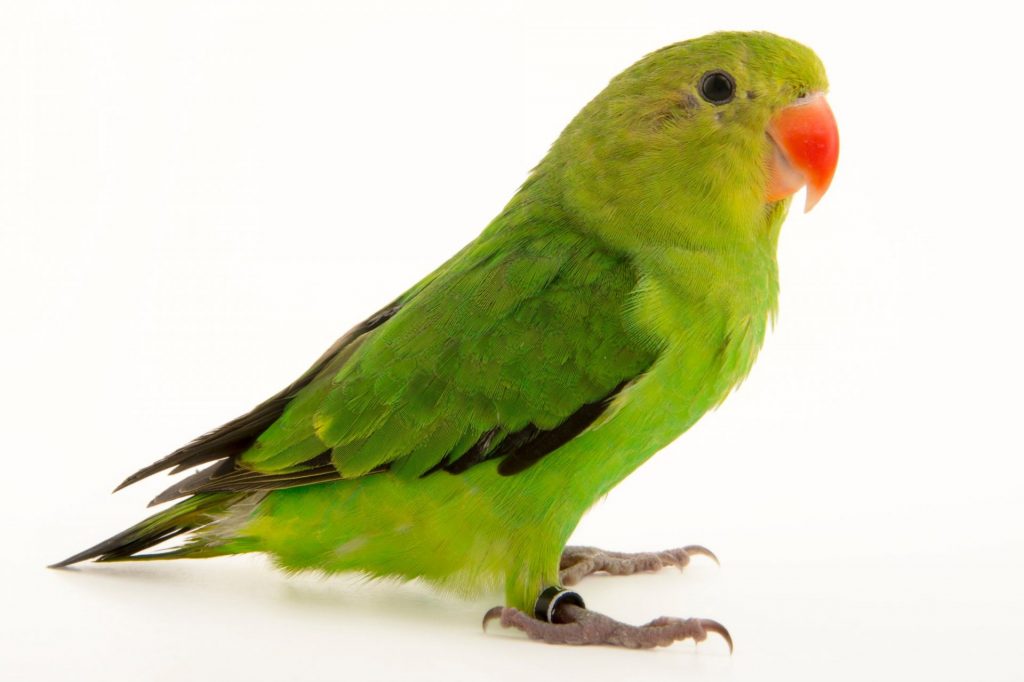
Ethiopia and Eritrea
In these countries, you can find one of the least known love bird species in the poultry world, the Agapornis taranta. There is very little information about them and the few reproductive successes obtained since this species is known in captivity.
This species is one of the most resistant of all since it is acclimated to altitudes of up to 3,000 mt, being able to withstand temperatures below zero. However, they tend to descend to lower altitudes in search of their favorite food: figs.
Their habitat is made up of scrub forests, but they can also inhabit euphorbia and acacia forests. They are also found in savannas and grasslands with isolated trees, and They have a super unique charm, they are very calm and peaceful birds, and it is also the least noisy of all lovebirds.
They have an intense green plumage; the head, the bridles, and the face are red; the chest, the abdomen is slightly pale green.
Central Africa
In the central zone of the African continent are Agapornis Pullaria and Agapornis Swinderniana.
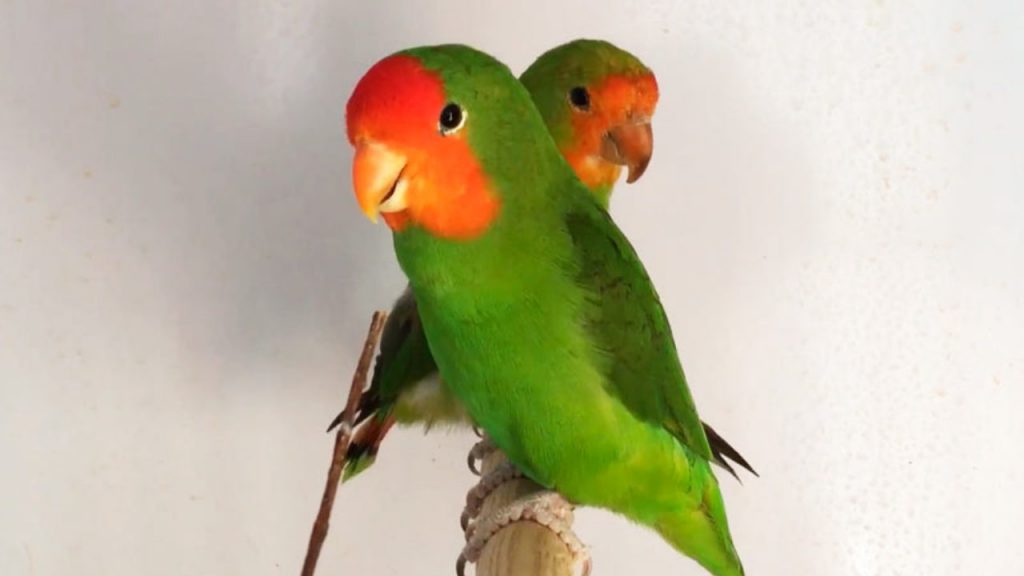
The Agapornis Pullaria are small birds, about 14 cm in length, that live in small flocks. They are easily scared and difficult to see.
Its flight is swift and straight; they emit high-pitched, high-pitched squeaks. They have a green plumage; head and face area are orange; the chest and abdomen are yellow, and its legs are gray.
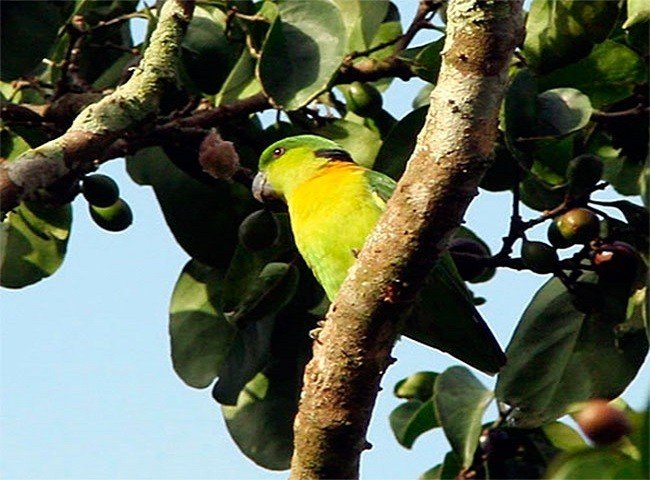
For its part, the Agapornis Swinderniana is a centimeter smaller, and few have been seen. Its plumage is green, but it has a black stripe on the neck that makes it very characteristic of the rest.
Its side feathers have a red stripe, but on the tail, the line is blue to purple. It has a more curved beak than the rest of the love birds and is gray. Its iris is yellowish and its legs, unlike the previous species, are green.
Southeast Africa
In the southeast of Africa, you can meet the most friendly love birds of all, and the loudest too, the Roseicollis Agapornis.
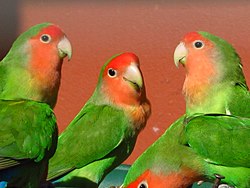
They live in small groups of approximately 20 to 30 individuals. They generally breed in abandoned weaver nests to avoid transporting nesting material.
The color of their feathers is usually green, although there are beautiful mutations such as pastel blue, pastel green, white-faced blue, white-faced yellow, white-faced grays, yellows, and a large, etc.
Their heads have a salmon pink color, and the female can be differentiated by having a larger head and because their shades are usually paler.
Northern Tanzania and Southern Kenya
In these two areas, you can find two types of love birds: Agapornis fischer and Agapornis Personata.

The Agapornis fischer: generally lives near water. They are somewhat aggressive birds with the rest, they can measure from 15 to 16 cm, and their life expectancy is up to 20 years.
In their ancestral mutation, they have greenback, chest, and wings. Its face has an orange-red color that extends just above the middle of its body. On the back of the head, and olive green mantle can be seen starting at the center of the eye and progressively extending towards the end.
They have a white ring that surrounds the eye, the bill is red, and both the legs and the nails are grayish.
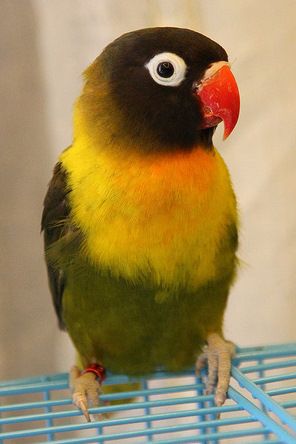
The Agapornis Personata: They are found in the north of Tanzania and some areas of Kenya, where some colonies with the Agapornis fischer have joined and have procreated. Fully fertile hybrids of these two species of love birds have been achieved.
This species is one of the best known. Its basic plumage is green; the forehead, crown, and cheeks are black with brown tones. It has a dark olive greenback of the head, its chest is yellow, and the sides of its body and abdomen are greenish-yellow.
It has a red beak, a green tail, and its legs are gray.
Lake Malawi
In the “Lake Malawi” located between Mozambique and Tanzania, you can find the wonderful Agapornis Lilianae.
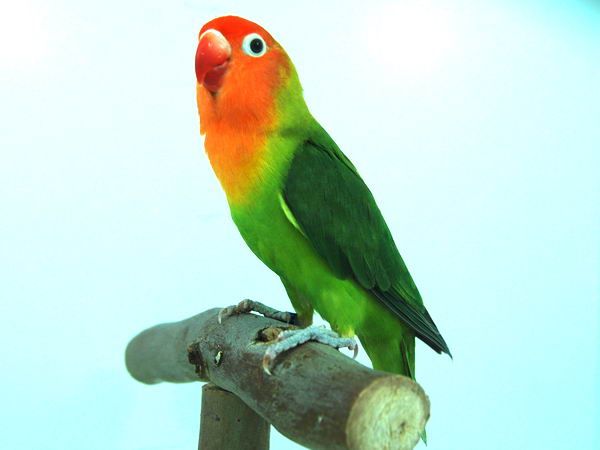
They grow to 14 cm and weigh up to 38 grams. They feed on seeds and suckers, and it is very common to see them eating in groups of up to 300 of them. This species is very popular in poultry farming, so they are in great danger of being hunted. At present, it is very protected to avoid its extinction.
They are often confused with the agapornis fischeri, however, it has several characteristics that can be differentiated. For example, they have a red face with a light touch of orange on the head. Also, they do not have the blue color on the belly that characterizes the fischeri so much.
Zambia
In this East African country, you could be lucky to see the Agapornis Nigrigenis species, and I say luck because of these there is a tiny number of these birds. Therefore, they could be in danger of extinction.
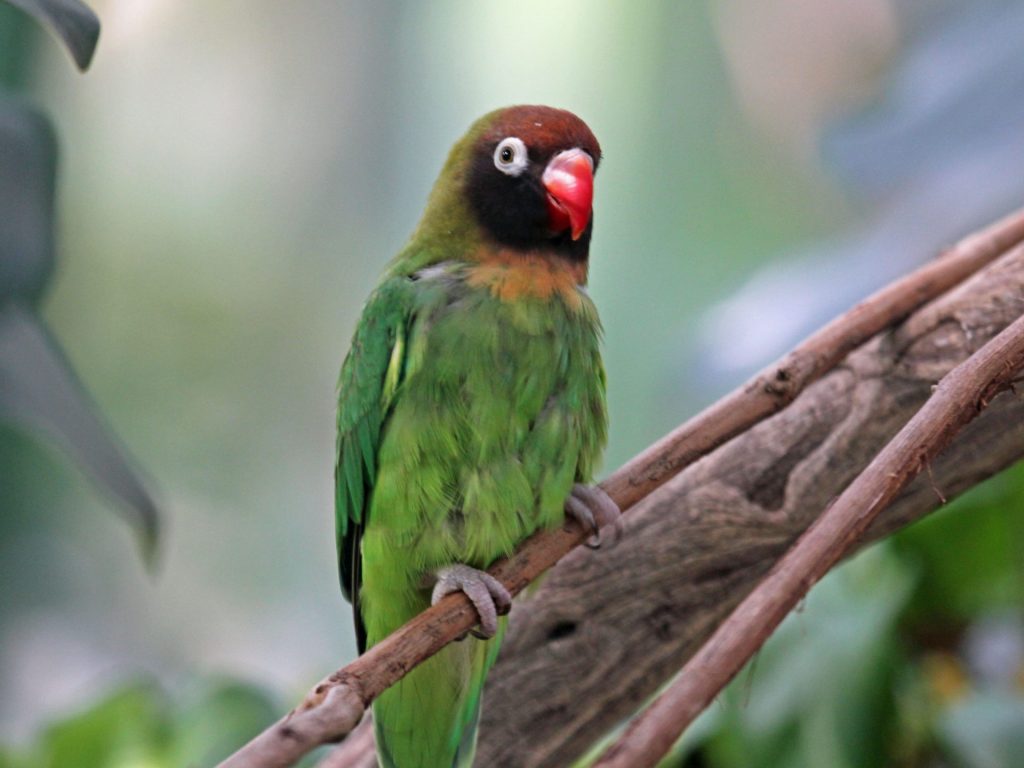
These birds live between 600 and 1,000 meters of altitude and prefer wooded areas. When they are adults, they have an intense green base plumage. The Head is brown, and the cheeks are black or brownish.
Between the lower area of the throat and the chest, they have a more or less wide area of reddish-orange color. The tail has yellow markings, and the back has visible blue markings. Its beak is red; the iris is reddish-brown, and the legs are greyish.
Characteristics of lovebirds
- In its natural habitat, it feeds on wild plants, their seeds, and the bushes that grow in the extensive dry plains.
- They are commonly known by the name: Australian parakeet and in some countries, Australian parrot or Australian tasting, and to a lesser extent as love birds.
- They belong to the parrot family, and like their relatives, they have a powerful curved beak that allows them to break the shells of the seeds on which they feed. They are small birds that can measure between 13 and 16 centimeters. Their tail feathers are short and rounded.
- Its plumage is very colorful. It varies from intense orange to electric blue depending on the species. The most common species being Agapornis personata, fischeri, and roseicollis. In nature, they have an ecological function as seed dispersers.
- It is not so easy to distinguish a male from a female since they do not present noticeable physical differences, but there are specific details that can help to identify them more or less:
- Males tend to do the job of feeding the female and stand up on the right with their legs together.
- Females tend to be larger than males, dominant and control the nest. They usually spread their tail feathers in a fan shape.
Fun facts you should know about lovebirds
Lovebirds are birds immensely appreciated by lovers of the animal world. Still, it is not only about cuteness and beautiful things, but there are also curious facts that are worth knowing about this beautiful species.
These are some of the curious facts that you should know about Lovebirds:
It is believed that they inspired the celebration of Valentine’s Day.
In the poem “Parliament of Foules” by the writer Geoffrey Chaucer, two birds are named that give each other affection like humans when they are in love.
This is evidence to suggest that these love birds inspired the celebration of Valentine’s Day without religious motives.
Androgyny exists in lovebirds
While there are species whose sex can be identified by specific characteristics in their feathers or size, there are others that are almost impossible. So much, so that DNA tests are needed.
Regarding behavior, females are said to be more aggressive, more active, and more authoritative, or due to a hole in the little finger. If it is large, the bird is female, and if it is small, it is male.
They have a strange way of placing their claws
We might think that all birds, or at least the species of parrots, place their claws in the same way, but the lovebird does it with two fingers directed forward and another two backward.
Until death separates them
These little birds get their name from the way they relate to each other. When they find a mate they never part. That happens until your partner dies; In this case, the lovebirds try to find another partner with whom to share their life.
Although the legend says that they are not able to find another related after the death of their previous partner, the reality is very different.
They love water
Like little children, so are love birds. They love to play with the water all the time.
Lovebirds live in holes.
These birds generally live in hollows in rocks, bushes, or trees. Some of the species create their nests in groups, and others are paired paired to prevent their nest building from being close to each other.
A once in a lifetime experience
As you can see, there is a magical aura around love birds, so we can ensure that having the opportunity to observe them in their natural state can become an experience that changes your perception of many aspects of your life. If you you’re wanting to bring part of your vacation back home and have a love bird as a pet there are many websites that offer love birds for sale.
Also, it never hurts to have such an excellent excuse to take a well-deserved vacation, get away from the daily hustle and bustle, and reconnect with nature.
We recommend that you have a good camera on hand because surely you will want to be able to document all the love birds that you manage to spot during your trip, so you can have memories forever.
